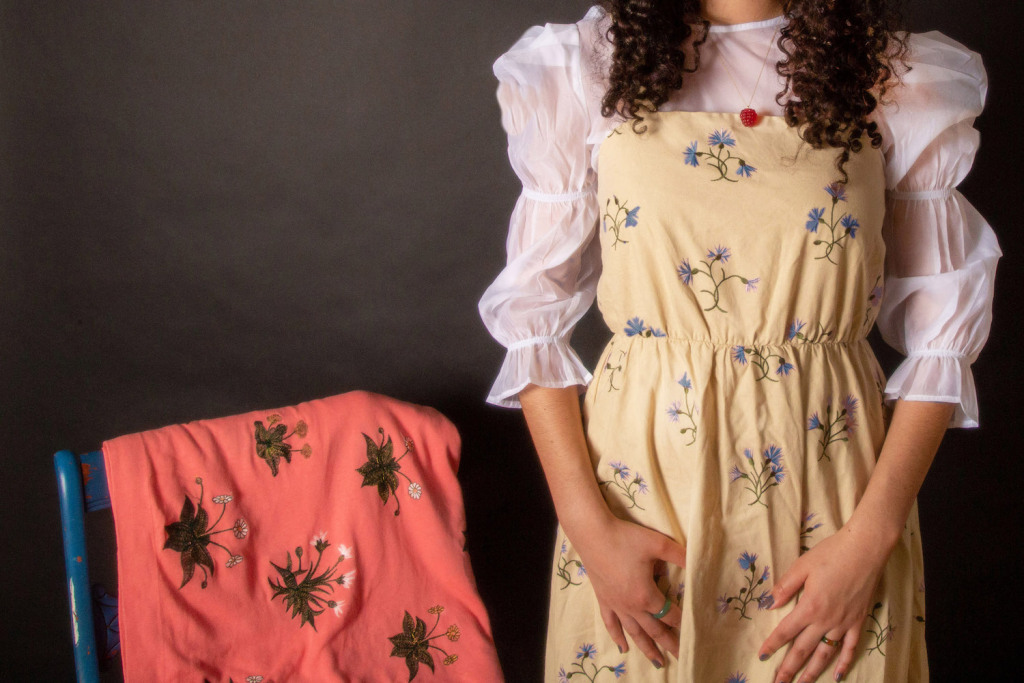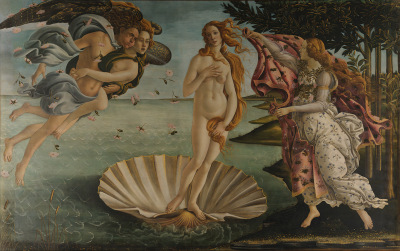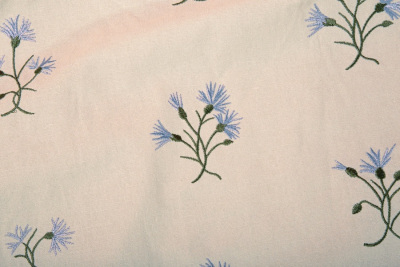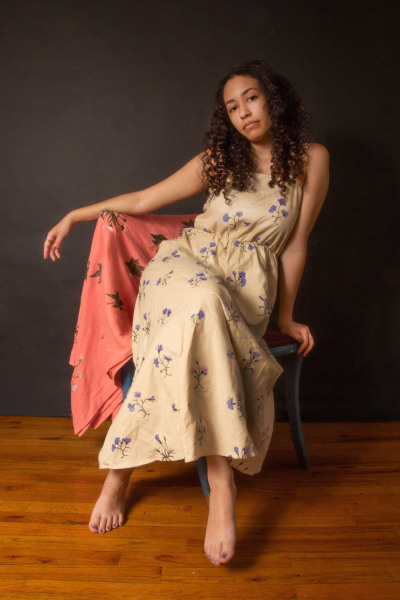 Nik Bentel
Nik Bentel
Over the past year, subculture-driven aesthetics, or “cores,” such as the pastoral Cottagecore and the collegiate-inspired Dark Academia, have been having a fashion moment, even influencing runway looks. On learning of the Cottagecore phenomenon known as the Strawberry Dress (a pink tulle confection by Lirika Matoshi that became one of the most talked-about garments of 2020), product designer Nik Bentel was inspired to create something in a similar vein.
Bentel—best known for his chalk drawers, shaped chalks that can make circles, dots, and other patterns—made particular note of the Strawberry Dress’s clear visual signifiers (think storybook princess), an earmark of “core” fashion. The dress “went viral for a couple of reasons,” he says, “the main one being that it was just so crazy looking.” He wondered if there could be a dress design that pulled from art history.
Bentel initially considered copying clothing from Gustav Klimt’s circa 1907 painting The Kiss but settled instead on the garment worn by the Hora of Spring in Botticelli’s Birth of Venus (c. 1484–1486). “[Klimt’s] painting is relatively abstract, compared with Botticelli’s work,” he says, “and I did not want too much of my input in the project; I wanted it to be really cut and dried.”
 Sandro Botticelli, The Birth of Venus, c. 1484–1486. Google Art Project.
Sandro Botticelli, The Birth of Venus, c. 1484–1486. Google Art Project.
In Botticelli’s painting, the Hora of Spring, a minor deity, wears a gown in a floral-patterned, cream-colored fabric. She is depicted in the act of draping a similarly patterned, coral-pink cloak over the naked Venus. Bentel liked the idea of the cloak as a prop and added it as an extra element to the project.
The result is an off-white, ankle-length, pinafore-style dress that comes with a matching organza shirt (but can also be worn on its own), plus a light-red blanket, sold separately, made of 100 percent cashmere. Both the dress and the blanket are embroidered with daisies, cornflowers, and primroses painstakingly copied from the originals.
Bentel made the prototypes himself but needed help from friends in the fashion world to figure out how to create an edition of 100 of each piece. For the dress, using a cotton-linen blend that falls in dramatic folds while not being too stiff, was both an aesthetic and a practical choice. “First, I was trying to match the look of the fabric that was there [in the painting],” says Bentel. “The other big thing,” he continues, “was getting the embroidery right; we made samples on a thicker fabric and it just didn’t look correct.”
 Nik Bentel
Nik Bentel
The embroidery on both dress and blanket is handmade to an extent, meaning a hand-operated embroidery machine was used, and the floral designs are faithful to the originals. Bentel describes the process of creating the designs as “basically sitting there with thousands of little exploded images [of flowers] and trying to match them up.”
The Botticelli dress occupies a middle ground between haute couture and costume. Yet, with its clean lines and understated embroidery, it makes an easy closet staple for summer. And photos show it worn by contemporary-looking models in modern settings to avoid any connection with cosplay.
Bentel admits he had some doubts about the project. When the dress launched, “I was worried it looked too much like a replica,” he confesses. But the response has exceeded his expectations: Half of the dresses have been bought, and the cashmere blankets are completely sold out.
The success of the project has emboldened Bentel to consider revisiting Klimt, perhaps as inspiration for a winter throw. As for the fashion aesthetics that inspired him in the first place, he has a name for his: Artcore.
The Botticelli Dress comes in blue or red and is available here.
 Nik Bentel
Nik Bentel
Source link : https://www.artnews.com/art-news/product-recommendations/nik-bentel-botticelli-dress-1234601292












